Seven years after the nuclear tests in Alamogordo, New Mexico, Dr. J. Robert Oppenheimer, the father of the atomic bomb, was lecturing at a college when a student asked if it was the first atomic test ever conducted. “Yes, in modern times,” he replied.
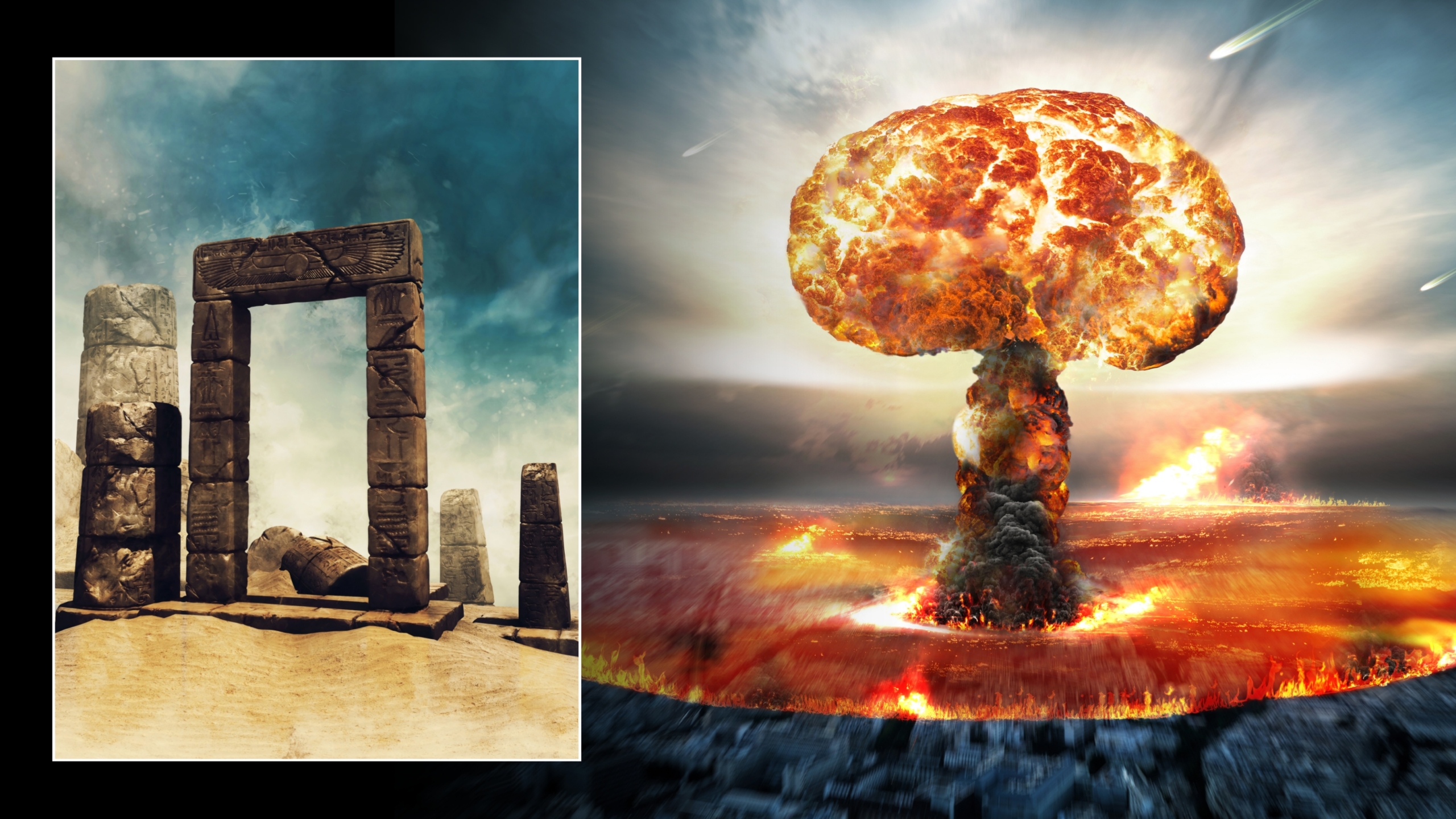
The scientist’s words were actually an allusion to the evidences from antiquity ― the acient Hindu texts ― that describe an apocalyptic catastrophe which doesn’t correlate with volcanic eruptions or other known phenomena.
Seven years ago from then, Oppenheimer, who avidly studied ancient Sanskrit, had referred to a passage in “The Bhagavad Gita” that describes a global disaster caused by “an unknown weapon, a ray of iron.”
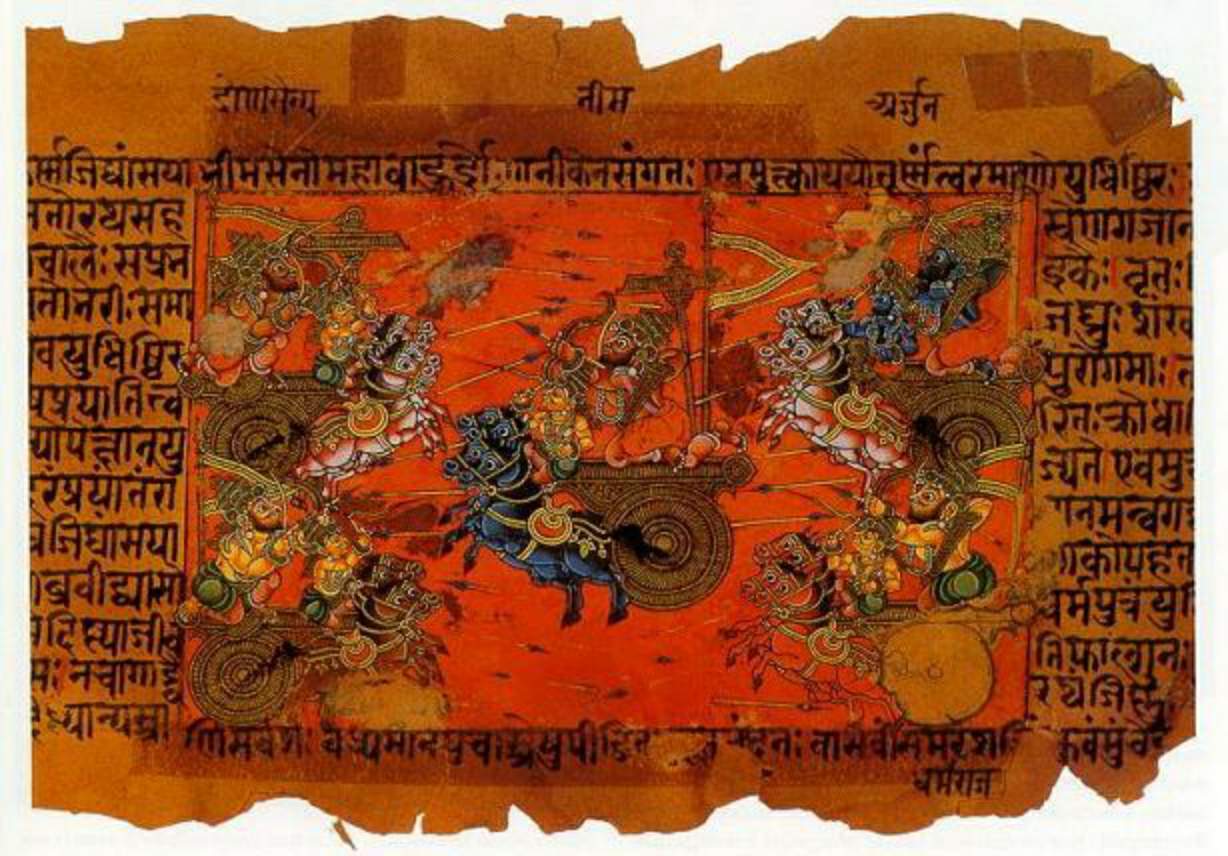
Ancient Hindu texts describe great battles taking place and an unknown weapon that causes great destruction. A manuscript illustration of the battle of Kurukshetra, recorded in the Mahabharata, describes such ghastly event.
While it may be alarming to the scientific community to speak of the existence of atomic weapons before the present cycle of civilization, evidence of this phenomenon seems to whisper its verses in every corner of the planet.
Radiation still so intense, the area is highly dangerous. A heavy layer of radioactive ash in Rajasthan, India, covers a three-square mile area, ten miles west of Jodhpur. Scientists are investigating the site, where a housing development was being built.
For some time it has been established that there is a very high rate of birth defects and cancer in the area under construction. The levels of radiation there have registered so high on investigators’ gauges that the Indian government has now cordoned off the region.
Scientists have unearthed an ancient city where evidence shows an atomic blast dating back thousands of years, from 8,000 to 12,000 years. It destroyed most of the buildings and probably a half-million people. One researcher estimates that the nuclear bomb used was about the size of the ones dropped on Japan in 1945.
The ruins of Harappa
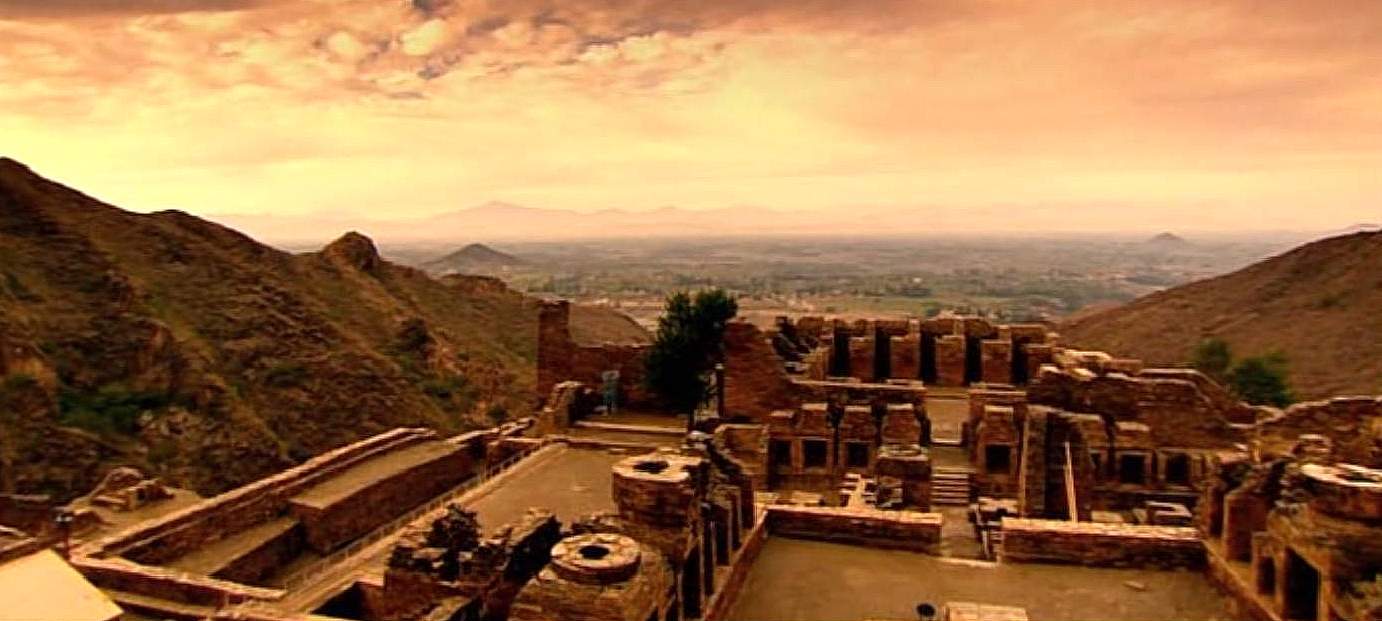
The Mahabharata clearly describes a catastrophic blast that rocked the continent:
“A single projectile charged with all the power in the Universe…An incandescent column of smoke and flame as bright as 10,000 suns, rose in all its splendor…it was an unknown weapon, an iron thunderbolt, a gigantic messenger of death which reduced to ashes an entire race.”
“The corpses were so burned as to be unrecognizable. Their hair and nails fell out, pottery broke without any apparent cause, and the birds turned white. After a few hours, all foodstuffs were infected. To escape from this fire, the soldiers threw themselves into the river.”
A historian’s comment
Historian Kisari Mohan Ganguli says that Indian sacred writings are full of such descriptions, which sound like an atomic blast as experienced in Hiroshima and Nagasaki. He says references mention fighting sky chariots and final weapons. An ancient battle is described in the Drona Parva, a section of the Mahabharata.
“The passage tells of combat where explosions of final weapons decimate entire armies, causing crowds of warriors with steeds and elephants and weapons to be carried away as if they were dry leaves of trees,” says Ganguli.
“Instead of mushroom clouds, the writer describes a perpendicular explosion with its billowing smoke clouds as consecutive openings of giant parasols. There are comments about the contamination of food and people’s hair falling out.”
Desert glass: An evidence of ancient atomic blasts?
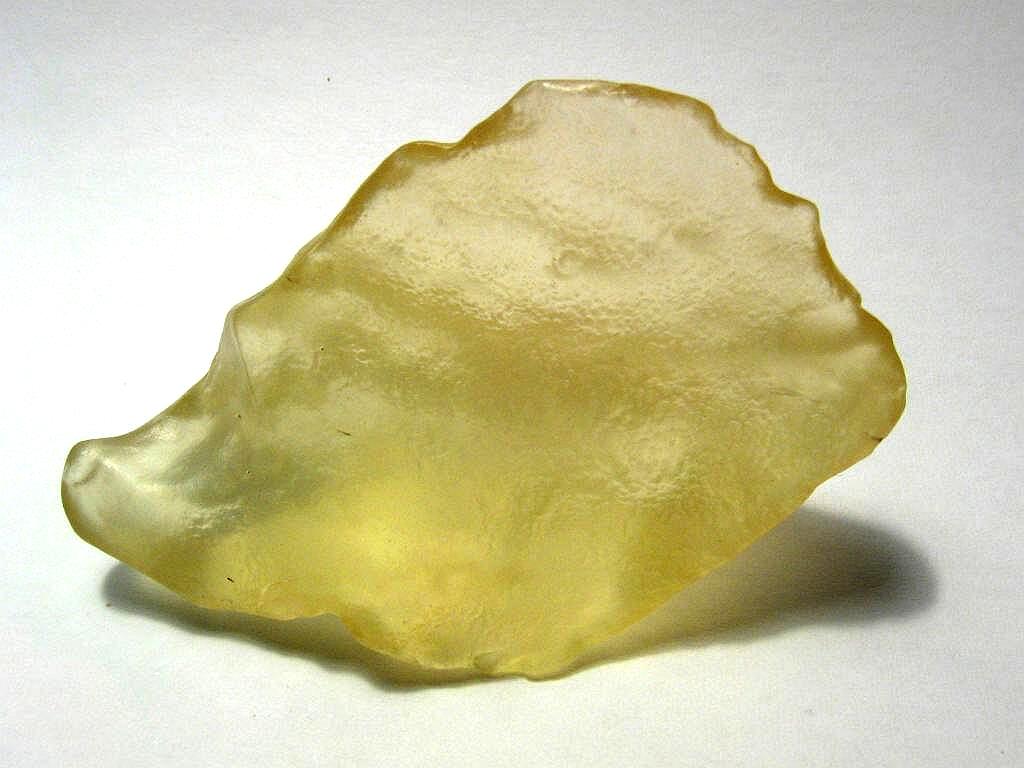
The evidence of atomic blast in ancient times comes not only from the Hindu verses but also from ample extensions of fused glass fragments scattered throughout many deserts of the world. Silicon crystals, curiously cast, resemble remarkably the same fragments found after the nuclear explosions in Alamogordo’s White Sands atomic testing site.
In December 1932, Patrick Clayton, a surveyor from the Egyptian Geological Survey, drove between the dunes of the Great Sand Sea, close to the Saad Plateau in Egypt, when he heard crunching under the wheels. When he examined what was causing the sound, he found great chunks of glass in the sand.
The find caught the attention of geologists around the world and planted the seed for one of the biggest modern scientific enigmas. What phenomenon could be capable of raising the temperature of desert sand to at least 3,300 degrees Fahrenheit, casting it into great sheets of solid yellow-green glass?
While passing through Alamogordo’s White Sands missile range, Albion W. Hart, one of the first engineers to graduate from the Massachusetts Institute of Technology, observed that the chunks of glass left by nuclear tests were identical to the formations that he observed in the African desert 50 years earlier. However, the extension of the cast in the desert would require that the explosion be 10,000 times more powerful than that observed in New Mexico.
Many scientists have sought to explain the dispersion of large glass rocks in the deserts of Libya, the Sahara, Mojave, and many other places in the world, as products of gigantic meteorite impacts. However, due to the absence of accompanying craters in the desert, the theory doesn’t hold up. Neither satellite imagery nor sonar has been able to find any holes.
If meteorites caused the formation of the sand glass, then where are the impact craters?
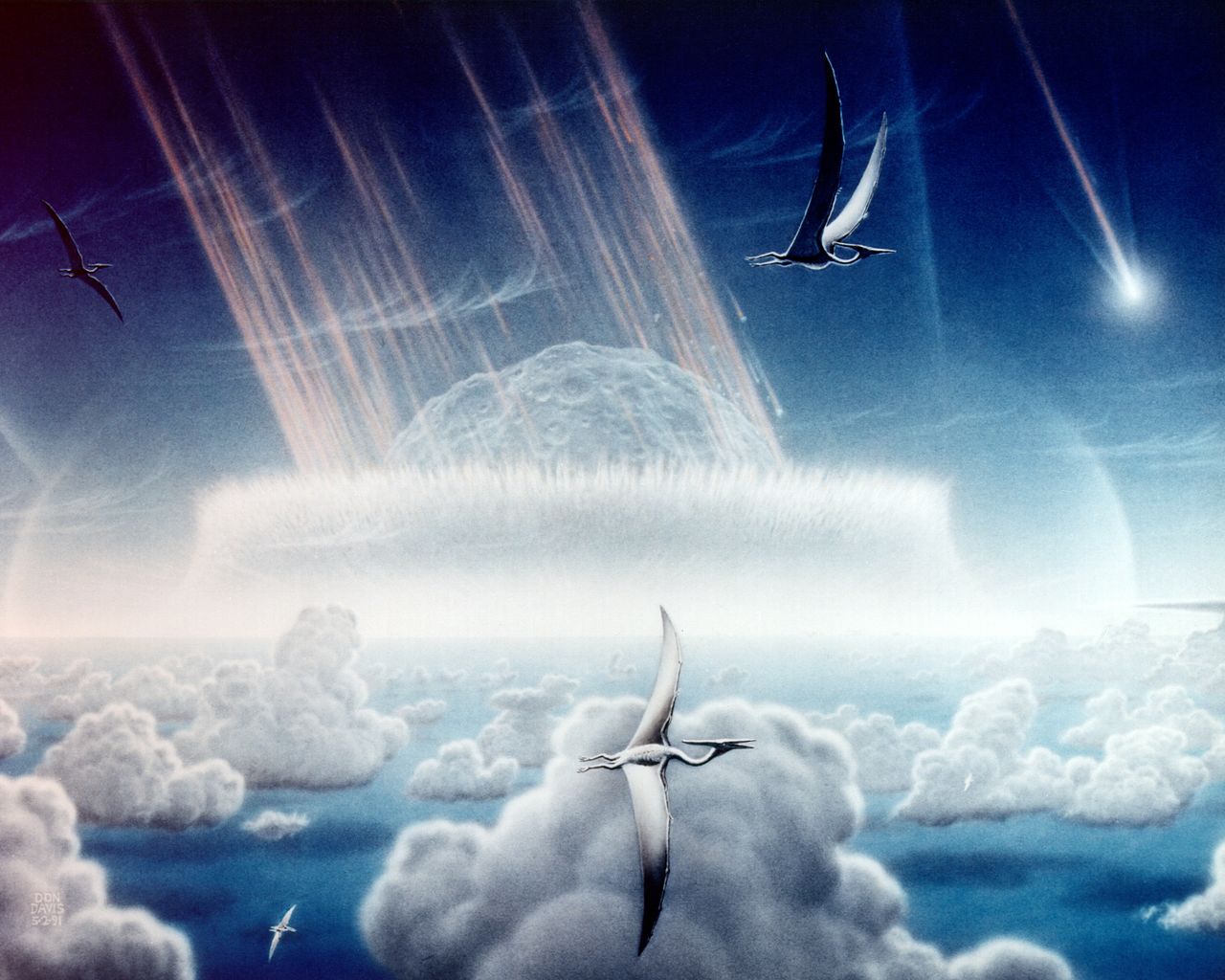
Furthermore, the glass rocks found in the Libyan Desert present a grade of transparency and purity (99 percent) that is not typical in the fusions of fallen meteorites, in which iron and other materials are mixed in with the cast silicon after the impact.
Even so, scientists have proposed that the meteorites causing the glass rocks could have exploded several miles above the surface of Earth, similar to the Tunguska Event, or simply rebounded in such a way that they carried with it the evidence of the impact, but leaving the heat from the friction.
However, this doesn’t explain how two of the areas found in close proximity in the Libyan Desert show the same pattern — the probability of two meteorite impacts so close is very low. Nor does it explain the absence of water in the tektite specimens when these areas of impact were thought to be covered in it some 14,000 years ago.
Archeological investigation provides more in-depth information
Archeologist Francis Taylor says that etchings in some nearby temples in Rajasthan he has managed to translate, suggesting that they prayed to be spared from the great light that was coming to lay ruin to the city. “It’s so mind-boggling to imagine that some civilization had nuclear technology before we did. The radioactive ash adds credibility to the ancient Indian records that describe atomic warfare.”
Construction has halted while the five member team conducts the investigation. The foreman of the project is Lee Hundley, who pioneered the investigation after the high level of radiation was discovered. There is evidence that the Rama empire (now India) was devastated by nuclear war. The Indus valley is now the Thar desert, and the site of the radioactive ash found west of Jodhpur is around there.
Until the bombing of Hiroshima and Nagasaki, modern mankind could not imagine any weapon as horrible and devastating as those described in the ancient Indian texts. Yet they very accurately described the effects of an atomic explosion. Radioactive poisoning will make hair and nails fall out. Immersing oneself in water gives some respite, though it is not a cure.
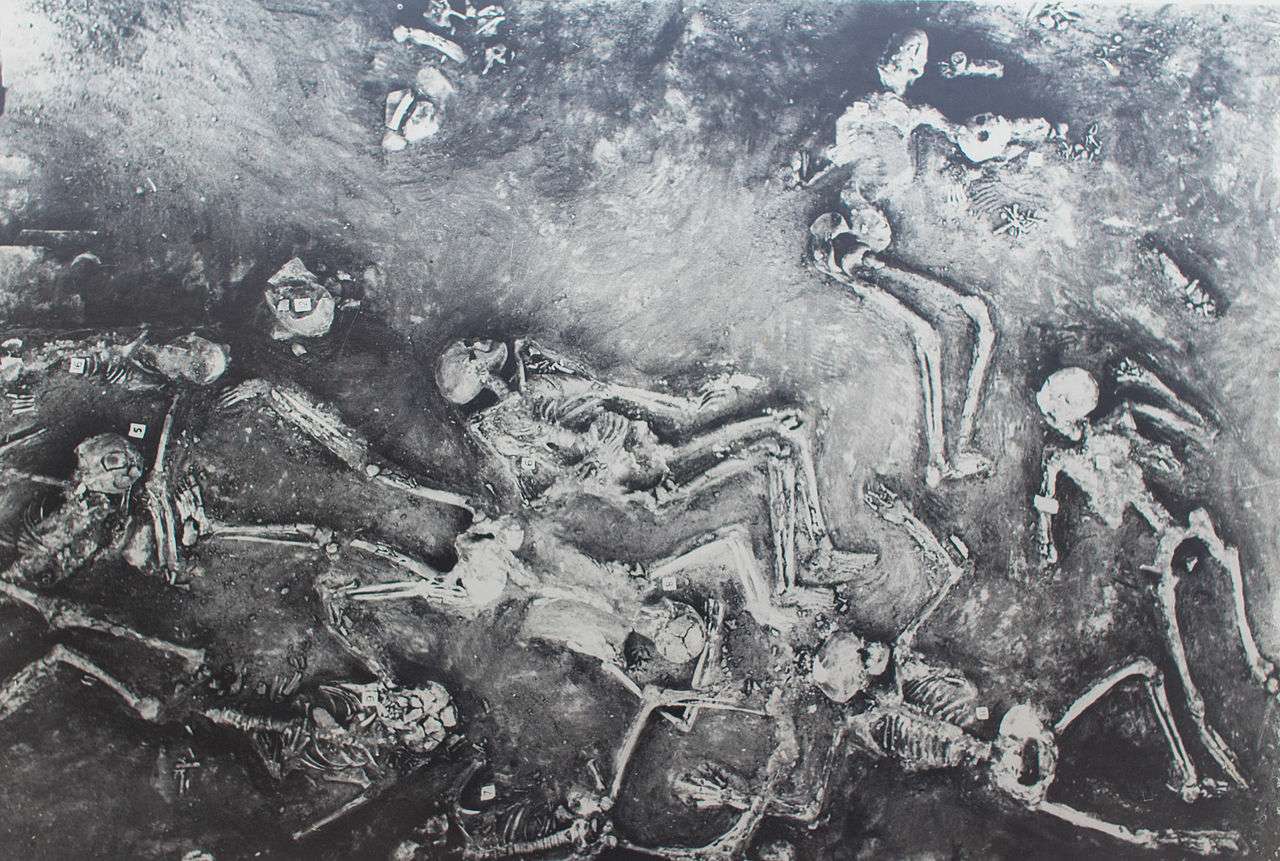
When excavations of Harappa and Mohenjo-Daro reached the street level, they discovered skeletons scattered around the cities, many holding hands and sprawling in the streets as if some instant, horrible doom had taken place. People were just lying, unburied, in the streets of the city. And these skeletons are thousands of years old, even by traditional archaeological standards. What could cause such a thing? Why did the bodies not decay or get eaten by wild animals? Furthermore, there is no apparent cause of a physically violent death.
These skeletons are among the most radioactive ever found, on far with those at Hiroshima and Nagasaki. At one site, Soviet scholars found a skeleton which had a radioactive level 50 times greater than normal. Other cities have been found in northern India that show indications of explosions of great magnitude.
One such city, found between the Ganges and the mountains of Rajmahal, seems to have been subjected to intense heat. Huge masses of walls and foundations of the ancient city are fused together, literally vitrified! And since there is no indication of a volcanic eruption at Mohenjo-Daro or at the other cities, the intense heat to melt clay vessels can only be explained by an atomic blast or some other unknown weapon. The cities were wiped out entirely.
While the skeletons have been carbon-dated to 2500 BC, we must keep in mind that carbon-dating involves measuring the amount of radiation left. When atomic explosions are involved, that makes them seem much younger.
Interestingly, Manhattan Project chief scientist Dr. Oppenheimer was known to be familiar with ancient Sanskrit literature. In an interview conducted after he watched the first atomic test in July 1945, he quoted from the Bhagavad Gita:
“Now I am become death, the destroyer of worlds’. I suppose we all felt that way.” ―Dr. J. Robert Oppenheimer
Seven years later, in an interview at Rochester University, Dr. Oppenheimer explained, ancient cities whose bricks and stonewalls have literally been vitrified, or fused together, can be found in India, Ireland, Scotland, France, Turkey and other places. There is no logical explanation for the vitrification of stone forts and cities, except from an atomic blast.
Moreover, the city is not the only ancient locale suspected to have gone nuclear. Dozens of buildings from the ancient world present bricks with fused rocks, like the heat test that modern scientists cannot explain:
- Ancient forts and towers in Scotland, Ireland, and England
- The city of Catal Huyuk in Turkey
- Alalakh in northern Syria
- The ruins of the Seven Cities, near Ecuador
- Cities between the Ganges River in India and the Hills of Rajmahal
- Areas of the Mojave Desert in the United States
To say, there is by all accounts enough proof for us to contemplate: Could there be more to our mankind’s history than we once thought? What could have caused these radioactivities? Could there have been people with the greatest minds many years back who had atomic abilities?




